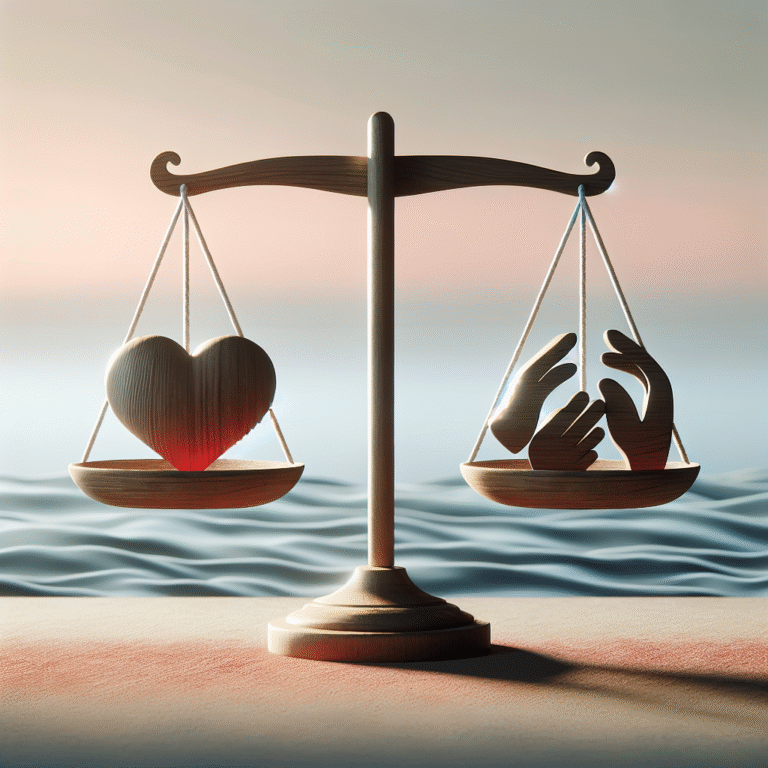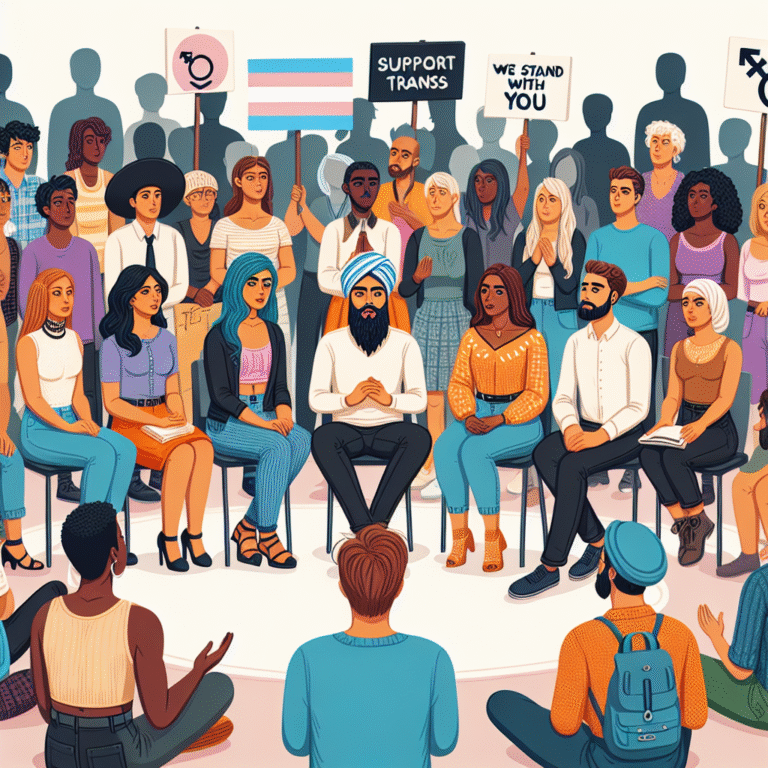
Introduction
In an era where personal relationships are both celebrated and scrutinized, understanding the dynamics of power and equality is essential. Relationships are a complex interplay of emotions, desires, and expectations, often defined by who holds the reins. The topic of The Power Play: How Control and Equality Shape Relationship Dynamics couldn’t be more relevant: from romantic partnerships to professional affiliations, the balance of power impacts how individuals connect. By navigating this delicate balance, we can foster healthy relationships that celebrate equality rather than domination.
As we dive into this exploration, we’ll uncover how control and equality manifest in various relationships, drawing upon real-world examples to illustrate key insights. Prepare yourself for a journey that not only dissects the mechanics of relationship dynamics but also empowers you to take charge of your connections.
The Foundation of Relationship Dynamics
Understanding Power in Relationships
Power dynamics exist in every type of relationship, serving as the underlying framework that shapes interactions. This section delves into:
- Definition of Power: Power in a relationship can be defined as the capacity of one individual to influence another, whether through emotional, financial, or psychological means.
- Forms of Power: Power can manifest in numerous ways, such as:
- Coercive Power: Using threats or punishment.
- Reward Power: Providing positive reinforcement.
- Legitimate Power: Based on perceived authority.
- Referent Power: Based on admiration and respect.
- Expert Power: Derived from one’s expertise or knowledge.
The Role of Control and Equality
When we discuss The Power Play: How Control and Equality Shape Relationship Dynamics, it is essential to differentiate between healthy control and unhealthy control.
-
Healthy Control: Within a partnership, there may be moments when one person’s skills or knowledge naturally lead to decision-making. For example, in financial matters, one partner might take the lead due to their expertise.
- Unhealthy Control: Conversely, if one partner consistently undermines the other’s autonomy or dictates all decisions, this leads to an imbalance of power.
To visualize these dynamics, refer to the following Table 1:
| Type of Control | Explanation | Impact on Relationship |
|---|---|---|
| Healthy Control | Based on expertise or mutual agreement | Supports decision-making |
| Unhealthy Control | Based on domination or manipulation | Erodes trust and respect |
The Power Play in Different Relationship Types
Romantic Relationships
Romantic relationships provide fertile ground for exploring The Power Play: How Control and Equality Shape Relationship Dynamics.
Case Study: The Empowered Couple
Consider a couple, Emma and James, who embody a healthy balance of power. Emma is excellent at budgeting, while James excels at conflict resolution. They thrive by recognizing each other’s strengths and deferring to one another when necessary. By sharing power equally, they strengthen their relationship foundations.
Analysis: Emma and James exemplify how control can coexist with equality, shifting dynamics to fit the situation rather than adhering strictly to traditional roles.
Professional Relationships
In the workplace, power dynamics can significantly affect team collaboration and productivity. How do leaders wield control? Do they nurture equality, or do they create hierarchies?
Case Study: The Collaborative Team
Meet a tech startup where the CEO, Sarah, fosters a culture of openness and collaboration. She actively encourages employees to share ideas without fear of dismissal. When the team feels empowered, creativity and innovation flourish.
Analysis: Sarah’s approach illustrates that effective leadership can promote equality while harnessing individual strengths, aligning with the principles of The Power Play: How Control and Equality Shape Relationship Dynamics.
Friendships
Friendships may often take a backseat in discussions about power dynamics, yet they are equally important.
Case Study: The Supportive Circle
Consider three friends: Alex, Jordan, and Taylor. When one struggles, the others rally around, providing support and space for vulnerability. They recognize that sharing power—whether it’s emotional support or decision-making—bolsters their bond.
Analysis: This dynamic underscores how control can be fluid among friends, reinforcing that The Power Play: How Control and Equality Shape Relationship Dynamics is not limited to romantic or professional ties.
Key Influences on Relationship Dynamics
Communication
Communication is the cornerstone of any relationship. It influences how power dynamics play out.
- Open Dialogues: Encouraging open conversations about needs, fears, and aspirations fosters equality and helps prevent unhealthy power imbalances.
- Conflict Resolution: How conflicts are handled can make or break relationships. Emphasizing understanding and compromise can shift power dynamics positively.
Cultural Context
Cultural backgrounds significantly influence expectations around power and equality. For instance:
- Collectivist Cultures: Often emphasize family and communal ties over individual desires, impacting how control is perceived and shared.
- Individualist Cultures: May focus more on personal autonomy, leading to differing expectations about relationship dynamics.
Table 2 showcases the cultural impact on power dynamics:
| Culture Type | Emphasis | Resulting Power Dynamics |
|---|---|---|
| Collectivist | Community and family | Shared control and responsibilities |
| Individualist | Personal achievement and autonomy | Greater emphasis on individual control |
Cultivating Healthy Power Dynamics
Recognizing Patterns
To navigate The Power Play: How Control and Equality Shape Relationship Dynamics, it’s crucial to recognize unhealthy patterns. Look for signs like:
- Reluctance to express feelings
- One-sided decision-making
- Persistent feelings of dissatisfaction
Improving Equality
To foster equality, individuals can take proactive steps:
- Establish Boundaries: Clear boundaries can promote respect and understanding.
- Empower the Other: Encourage the sharing of opinions and ideas.
- Practice Active Listening: Make an effort to understand and validate each other’s perspectives.
Conclusion
Understanding The Power Play: How Control and Equality Shape Relationship Dynamics empowers us to foster healthier, more equitable connections. Whether in personal, professional, or platonic relationships, the delicate dance between control and equality shapes our experiences.
Takeaways:
- Recognize the types of power at play.
- Strive for open communication.
- Embrace shared decision-making.
By actively working towards a balanced dynamic, we can enhance our relationships, ultimately nurturing connections built on respect and collaboration.
FAQs
1. What are power dynamics?
Power dynamics refer to the ways in which power is distributed and exercised within any relationship, influencing interactions and expectations.
2. How can I identify unhealthy control in a relationship?
Unhealthy control may manifest as one partner consistently making decisions without consultation or belittling the other’s opinions.
3. How can I promote equality in my relationship?
Promote equality by practicing open communication, recognizing each individual’s strengths, and establishing shared decision-making processes.
4. Are power dynamics the same in all cultures?
No, cultural context significantly influences how power dynamics are perceived and enacted, affecting expectations in relationships.
5. What if I feel my relationship is imbalanced?
If you feel your relationship is imbalanced, it may be beneficial to open a dialogue with your partner about your feelings, seeking professional help if needed.
By engaging with the nuances of power and equality, we step towards fulfilling and balanced relationships that enrich our lives.

















